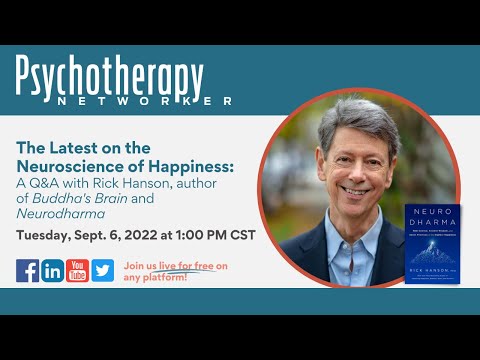When Lucy first came to me for therapy nine years ago, she told me how she suffered from anxiety, depression, and trauma. She’d also revealed that she had Asperger’s—now referred to as neurodivergence. She’d recently ended therapy with a different provider and sought me out, she’d said, because of my body-oriented approach. I felt a bit overwhelmed, as I didn’t have experience working with neurodivergent clients, but I told Lucy I’d do my best to help her.
As a bioenergetic psychotherapist, I include body-based exercises in my work. Bioenergetic analysis, a body-based approach to psychodynamic psychotherapy developed in the 1950s, incorporates exercises in therapy to reduce tension, increase feeling, and allow emotional expression.
Lucy had suffered with long-term, severe depression, including frequent suicidal ideation. She also had PTSD from a sexual assault that occurred not long after her sister died from an overdose. Lucy had no living family members and few friends, leaving her feeling disconnected from others.
At times, our work felt like we were moving backward or sidewards, like when Lucy called her physician’s office to cancel an appointment, told the receptionist her life didn’t matter anyway, and the receptionist called the police to escort her to the emergency room.
Lucy told me that her previous therapist had repeatedly tried to get her to join groups to address her isolation but that she hadn’t felt ready. When I spoke with the therapist, she told me about the challenges she’d encountered with Lucy, like her rigid thinking and stubbornness.
“To be honest, in the 11 years we worked together, I don’t think I changed her mind about anything,” she said flatly.
Bioenergetic therapists learn to read information about a person’s early developmental history, both in how they hold themselves and in the very shape of their body. Lucy was not only thin but gaunt. I also noticed tension in her hands, arms, and legs. It was as if her muscles were constantly working to hold her together. Her breathing was shallow, too. Even though everything about her appearance seemed to communicate that she felt rejected, Lucy seemed much more focused on her thoughts than what was happening in her body.
“When I was little, my mother regularly told me that having children ruined her life,” Lucy revealed during a later session. “She said she wished my sister and I had never been born.” She went on to tell me how her mother had resented caring for them and expected Lucy to complete complex tasks on her own, like painting the house in the summer heat. Adding insult to injury, on Lucy’s 17th birthday, her father left home and never returned.
A few weeks into our work, Lucy’s beloved pet guinea pig died the same week she learned her apartment building was being closed for emergency repairs. With little notice, she’d have to find a new place to live. “Why do bad things always happen to me?” she cried.
“These are difficult things to cope with,” I reassured her.
Grounding the Body
Lucy would have gladly spent each session just talking, but I knew that no amount of talking by itself would change the tension in her body, which I had no doubt contributed to her symptoms. About 20 minutes into most sessions, I’d motion for Lucy to stand, even while she continued talking, so I could guide her in a grounding exercise. With some clients, I wait for a natural break in the conversation to suggest body work. But since Lucy talked nonstop, I didn’t wait.
“Lucy, put your feet hip-width apart with your toes pointing forward,” I instructed. “Now, slowly bend and straighten your legs.” This grounding exercise is foundational to bioenergetic therapy. It helps the client build self-confidence and connect more deeply to their body—which would be key for Lucy, who seemed so disconnected from hers. I suspected she’d learned to numb herself to survive her painful childhood and later traumas.
“Lucy, what are you aware of in your body?” I asked as she began doing the exercise.
Lucy stopped talking, put a hand over her heart, and began to cry. “I miss my guinea pig,” she said. “His death hurts more because I have no family. He loved me. My mother never did.”
“Leave your hand on your heart,” I instructed, “and let yourself feel that sadness.”
Lucy began to sob, and I stayed with her quietly.
After the emotion moved through her, she said, “My last therapist never allowed me to cry deeply, but I notice that it helps me feel better.”
Learning Boundaries
As our work continued, we turned to Lucy’s frequent conflicts with friends and neighbors. As a result of her neurodivergence, Lucy had difficulty reading facial expressions and understanding how to relate to people.
“My neighbor called the police the other day after I stepped onto her property to get out of the way of a car,” she told me in one session. “Can you believe that?! I think I need to move. These people don’t understand me. They think I have no value because I’m a single, older woman and I’m not social like other people.”
Together, we worked on expanding the ways she could respond to people who didn’t treat her well. When she expressed distress about how her neighbors treated her, I invited her to stand up. “Lucy, put your hands out in front of you with your palms facing forward.” She obliged.
“Now expand your chest and claim your right to stay in your home and have people treat you well. When you were a child, you couldn’t speak up to your mother. You had no choice but to accept how she treated you. But now you don’t have to hide if people mistreat you. You can speak up.”
With practice, Lucy became more comfortable asserting her boundaries. A few weeks later, when a neighbor threatened to sue her about a property issue that wasn’t her fault, she hired a lawyer. When another neighbor complained about a tree in her yard that was blocking their view, she defended her right to keep it. As Lucy learned to assert herself more, her neighbors began to show her more respect.
Breathing Deeper
In addition to grounding and boundary-building exercises, Lucy and I also worked on helping her relax and breathe more fully. She struggled with narcolepsy and often fought to stay awake during the day. I realized that her shallow breathing contributed to her lack of energy and believed exercises to open up her breathing could help.
One week, I introduced an exercise ball into our work. Stretching backwards over the ball helps open the breathing passageways from the nose and mouth to the pelvic floor. Not only does this exercise help clients breathe more naturally and fully, but it can also help them release blocked emotions.
“Lucy,” I instructed, “I’d like you to begin by sitting on the exercise ball and planting your feet solidly on the ground. Now, gently lean back, allowing your head to rest on the ball, and breathe.”
Most clients become quiet when doing this exercise, but Lucy kept talking.
“Laurie, how could they treat me like that?” she cried. “My neighbor cut the bushes on my property. It’s not fair! I would never do that to someone. What did I do to deserve this?”
After just a few seconds on the ball, Lucy bounced up, continuing to vent her frustrations.
“Lucy,” I asked, “what are you experiencing?”
“I feel vulnerable in that position,” she said.
“Yes, it is a vulnerable position. Could you try tolerating the vulnerability a little longer? This time, try breathing a little deeper and focusing on the sensations in your body.”
By this point in our work together, Lucy and I had developed significant trust, so I knew she’d tell me if she felt like she was unable to continue.
She gave it another try, then sat up. “I can feel the tension in my gut,” she said.
“Where do you think that tension comes from?” I asked her.
Lucy went on to share how, after the assault, she’d shut down all sensations in her pelvic area to avoid the pain of that violation. We also discussed how that same tension had contributed to severe, chronic constipation, which had caused her regular discomfort.
“I’m sure my childhood contributed to this tension, too,” Lucy added.
It was a valuable insight, and we explored this history together.
“Lucy, put your hands on your stomach,” I told her as she continued the exercise. “Breathe into your hands. Tell yourself you’re safe now.”
Eventually, with patience, practice, and my support, Lucy learned to tolerate the vulnerability of being on the exercise ball. The exercise also helped her release the tension that was underlying her constipation. A few weeks later, Lucy walked into my office beaming.
“I’ve been feeling an aliveness in my body that I never felt before,” she said. “I’m finally beginning to enjoy my life again.”

In the last phase of our work, Lucy focused on how much my care meant to her. She said it took a long time to feel that care because of the strength of her defenses from childhood. I watched as she started caring better for herself, too, but an email she sent me after I’d returned from an extended vacation surprised me.
I’ve been feeling very happy lately, it read.
I’m becoming a version of myself I never imagined could exist. My inner spirit has found its way out of the darkness. Your care, patience, and love made me feel safe enough to show up regularly. I’ve begun to feel a whole-body sensation of myself. It feels like I’ve struck gold. And you guided me up the mountain. Your love taught me to love myself.
While Lucy continues to be impacted by her challenges, she’s developed a newfound self-confidence. Today, she focuses less on what others think and more on what she enjoys. She dances in her yard, and has returned to making art—a favorite hobby she abandoned years ago. She’s learned to more fully accept herself, too, celebrating her neurodivergence and its gifts.
She’s found a path to joy, and I know she’ll continue to walk it.
Laurie Ure
Laurie Ure, LICSW, is a certified bioenergetic therapist based in Gloucester, MA. She trains bioenergetic therapists in the U.S. and internationally, and leads workshops on a variety of topics related to bioenergetic analysis.













